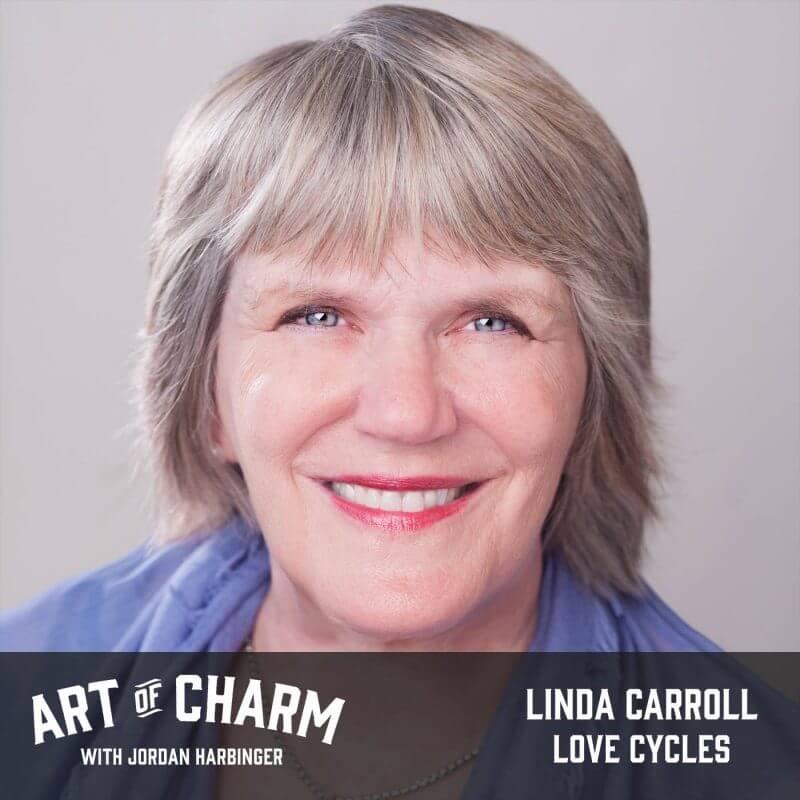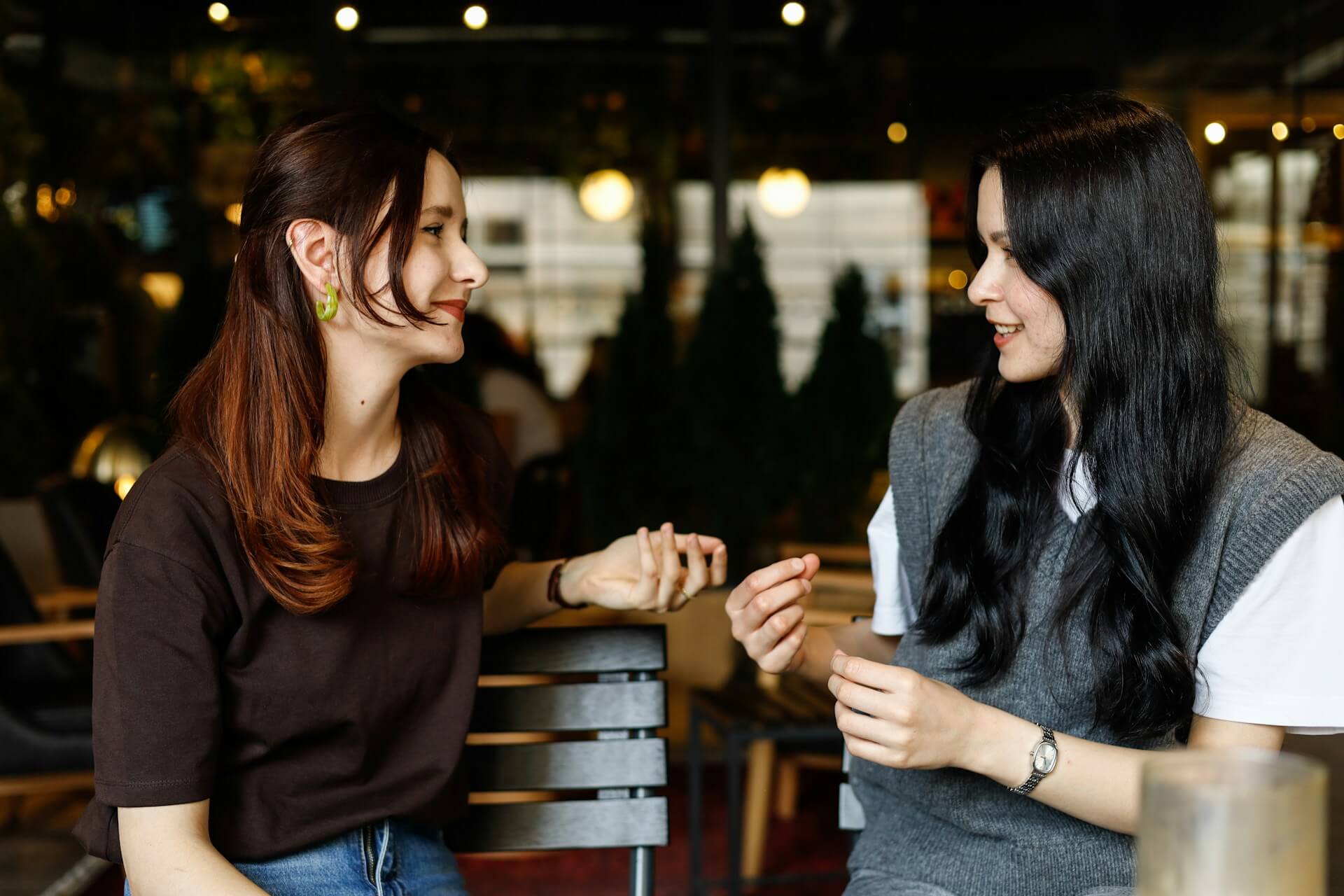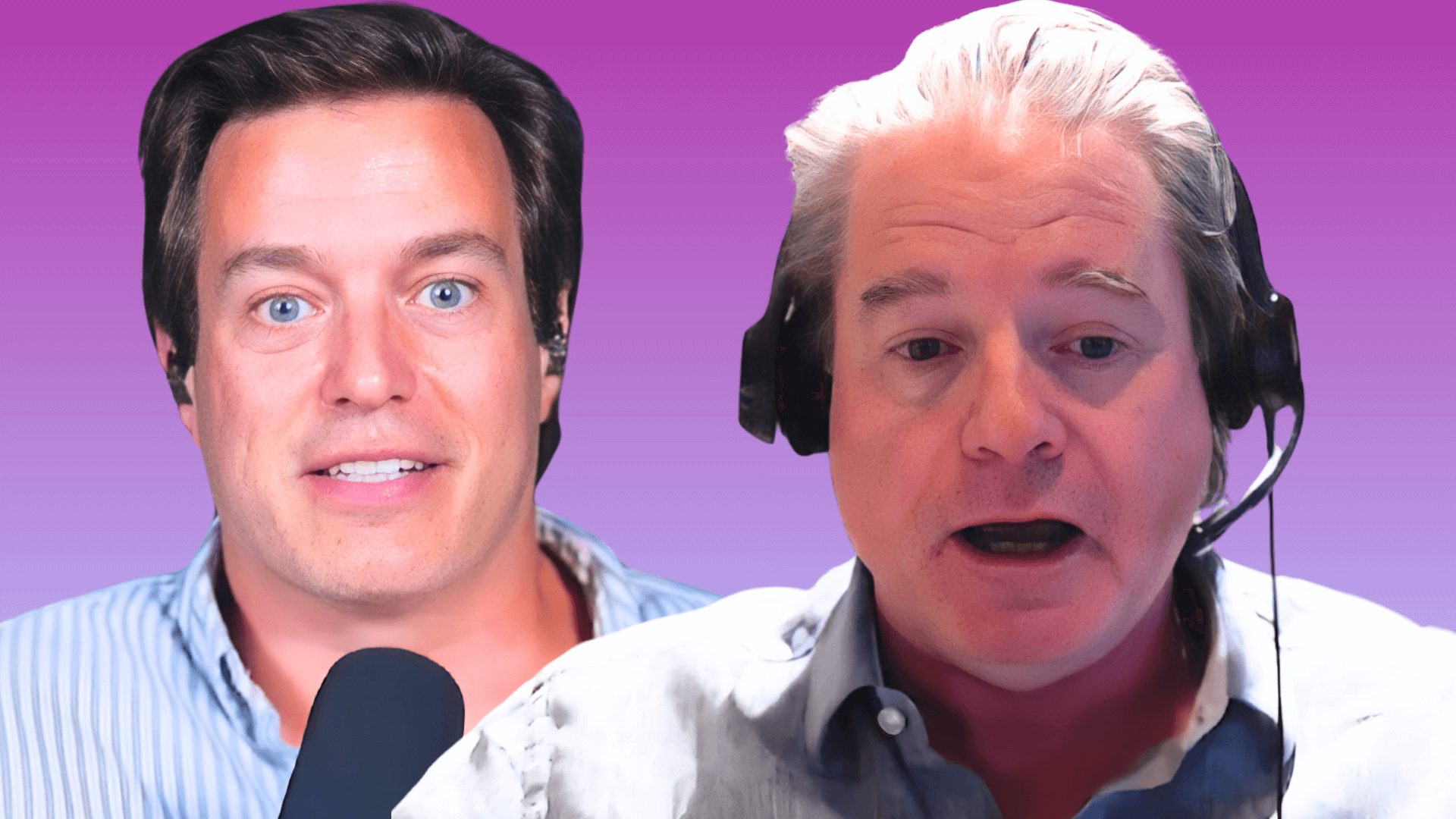Linda Carroll (@Lovecycleslinda) practices and teaches the skills of learning to love wholeheartedly by looking at what gets in the way, and discusses her book Love Cycles: The Five Essential Stages of Lasting Love.
The Cheat Sheet:
- There are five natural stages through which romantic relationships cycle: The Merge, Doubt and Denial, Disillusionment, Decision, and Wholehearted Love.
- Why does “falling in love” make us do crazy things?
- When your relationship winds up in an anxiety-fueled loop, how can you break out?
- What does Linda recommend for spicing up a perfunctory sex life?
- Understand these three components of good sex: desire, arousal, and orgasm.
- And so much more…
[aoc-subscribe]
When you’re single, it’s easy to idealize being in a relationship as the solution to (or at least a distraction from) a lot of your problems. But if you’re in a relationship — especially one that’s lasted a few turns around the block — you know that relationships carry their own set of unique problems. As it turns out, these problems often carry their own set of unique solutions. Difficult times don’t always herald the end of a relationship. Sometimes they’re just part of a cycle.
In her book Love Cycles: The Five Essential Stages of Lasting Love, veteran couples therapist Linda Carroll presents a groundbreaking model of the five natural stages of romantic relationships — the Merge, Doubt and Denial, Disillusionment, Decision, and Wholehearted Love — and a guide for navigating through them toward lasting love. We talk about these stages, where they come from, and where they can take us in episode 480 of The Art of Charm.
More About This Show
If you were to ask many people who have been in a long-term relationship to name the stages such a relationship endures, some might come up with just two: The Honeymoon Phase and Reality. But Linda Carroll, couples therapist of 35 years and married for 30, was able to come up with five in her book Love Cycles: The Five Essential Stages of Lasting Love — these are the Merge, Doubt and Denial, Disillusionment, Decision, and Wholehearted Love.
Drawing from more than just her own life experiences, Linda says these stages have long been mapped out by psychology, history, drama, and biology — at least since Sumerians began scribbling love poems on clay tablets in cuneiform millennia ago, in any case (and probably quite a while before then).
The Merge
While not all cultures require this stage as a basis of marriage, all cultures do experience this stage — because it’s really just a part of human biology. This is “the stage where we meet somebody and our bodies react in a certain way,” Linda says. “The oldest poem that we have in the world comes from a cave 4,000 years ago, and it’s about love…the cultural story we have is that’s what love is. And as we learn more and more about the brain, we find out that that’s not love — that’s attraction. It’s that first biological connection that says yes. But it’s not even a basis for a relationship, sometimes. It’s mediated by brain chemistry and changes in the hormones and chemicals and it’s a very powerful chemical cocktail.”
When we’re overcome with longing and find it difficult to eat or sleep because of these feelings, it’s no accident — the chemical reactions of The Merge parallel what we experience in the throes of an obsessive-compulsive disorder (OCD). But in this case, our infatuation is directed at a person rather than as a way of living. Even if our libidos generally tend toward the subdued side under normal circumstances, this is when our sex drives elevate. Or, as we learned from Disney’s Bambi, we’re twitterpated.
In other words, what we think of as love can make us go a little…crazy. We’re hooked by lust until the chemicals start to balance out to pre-Merge levels. Some of us are ready to abandon ship and move on to another relationship by this point — only to find that the chemical cocktail has diminishing returns. But others get hooked further by romance and even what becomes healthy attachment. How you’re hooked usually correlates with your age — or stage of life at which you perceive yourself.
Doubt and Denial (aka The Power Struggle)
The next stage is where the people in the relationship begin butting heads over their own insecurities. This is when we start to question whether or not our partner is “The One” who’s right for us.
“All of us have certain ways we’re vulnerable,” says Linda. “For most men, their primary vulnerability is feeling criticized or being seen as incompetent. [For most women, it’s] connection — feeling connected. Being in a relationship. So you have two different vulnerabilities. Imagine there’s a loop, and at the top of the loop, there’s a vulnerability toward feeling criticized, and a vulnerability toward disconnection.” When we find one of our vulnerabilities triggered, we react in one of three ways: we fight, we freeze, or we flee.
Let’s say a man and a woman are having dinner. The man is thinking about the work day and how he’s going to deal with his boss — who doesn’t like the way the man’s current project is going — which triggers his vulnerability of feeling criticized. He decides to flee — not physically, but emotionally. He picks up a book and starts to read it, ignoring the woman. The woman has a vulnerability toward disconnection, so that withdrawal is her trigger. She reacts by going into fight mode — which manifests in vocal criticism of the man’s reaction. He remains in flee mode, so she continues in fight mode, and each does their part in perpetuating this loop.
Breaking out of the Loop
So how do you get out of such an anxiety-fueled loop once you find you’re in one?
“One, you have to understand that it’s a loop and that no one’s wrong,” says Linda. “We’re just trying to each manage ourselves, so nobody’s bad here. And you have to have a language to talk about it — and people love the language of loops. She is saying to herself — if she has an awareness — ‘Wait a minute. He’s just reading a book. This isn’t against me.’ And he’s saying to himself — with his new awareness — ‘Wait a minute. She’s criticizing me because she’s anxious that I’m pulling away.’
“And they do something which I call a counterintuitive move. The intuitive move is to do what we’ve always done. But imagine that they’ve read my book and they’ve listened to this program…and they understand how this works. This is what’s different: He may pick up his book and look at her and say, ‘Sweetie, we’ve had a great night. I just want a little down time to read.’ That may be a little counterintuitive for him, but he’s telling her now, ‘I don’t not care about you; I’m just taking time out.’ Or she may say to him, ‘I know you need some space, and that’s great. I just want to say how about if we come back together in an hour?’ Or there’s some way that she then backs up. Her move that is intuitive is to go towards him, so her work is to learn to back off.”
So we disarm a loop by acknowledging potential triggers before they even go off, and come to a mutual understanding that differences in a relationship are inevitable because we all have different needs. We’re not our partners, and our partners aren’t us; in a way, we’re agreeing to disagree without malice or assignment of right and wrong.
“It’s the struggle and how we approach the struggle that really has a lot to do with who stays together and who doesn’t,” says Linda.
Disillusionment, Decision, Wholehearted Love, and Sex
In the stage of Disillusionment, all we see is what’s wrong in the relationship. This is also known as The Frozen Wall. We either break through that wall, work it out, and move on to Wholehearted Love, or we take it to the Decision stage.
In the stage of Decision, we face four possibilities:
- Separate
- Do nothing
- Lead parallel lives
- Rebuild the partnership
Ideally, when we’re with that elusive “The One” we want to spend the rest of our lives with, we’ll make it to the stage of Wholehearted Love. This is when you’re having sizzling, great sex — even when you’ve been together for 40 years. But for a lot of couples, sex is the stumbling block that breaks the deal before they can make it to this point.
“There used to be an old view in my field of marriage and family therapy,” says Linda, “that you had to work everything out to have good sex. But that’s not true! You’re never going to work everything out…if the sex life is feeling dying or dead or boring — perfunctory, once-a-week or whatever happens — it doesn’t mean you don’t love each other. It doesn’t mean there’s something wrong. It means that you need to have a new adventure.”
When we think back to The Merge stage, the mutual desire for sex was a natural, spontaneous thing. By the time we make it to the later stages, the chemistry has cooled down a bit and we have to make a conscious effort — we have to work at it. In part of the greater understanding of one another, this is realizing that each person may have very different turn ons.
“There are two problems couples have with sex, most of all,” says Linda. “One is not talking about it in a way that isn’t blaming. To be able to talk about it. It’s a natural thing — it comes and it goes and it stops and it slows down — how do we get it going again? And the second is desire discrepancy, which is a huge problem.”
Simply put, desire discrepancy is when there’s a difference between the amount of sex you want and the amount of sex you’re actually getting. If even talking about sex is rough for the partners in a relationship, chances are pretty good that neither is getting as much as they want.
Like disarming the dreaded loops before they begin, we want to open a dialogue that is free of blame or anger — neither person is wrong if there’s a lack of sex in the relationship. This shouldn’t lead to a power struggle, but quite the opposite: we want to reaffirm that we’re there to meet each other’s needs.
When Linda talks about sex, she points out these three parts:
- Desire
- Arousal
- Orgasm
“We are focused on desire and orgasm in this culture,” says Linda. “But the part that doesn’t get too much attention is arousal. Here’s something that is, I think, true for the majority of people — not everybody, because nothing’s true for everybody: you can have very low desire, and you can get aroused. But it’s not just through desire that you get aroused…if we depend on desire to get there, to get turned on, and we don’t have it, then we think we can’t get there. But there are all kinds of ways that we can get excited.”
And while we might think of sex as a young person’s game — and dismiss the need to worry about it in later years — studies have shown that not only are older couples still doing it, but many report that sex has actually gotten better in their golden years.
“It’s because you’re not so into performance,” says Linda. “Not everybody, of course, gets there, and a lot of people just let it go — and that’s really sad. At any age of life, you can have a dynamic sex life. You just have to come about it through different doorways.”
THANKS, LINDA CARROLL!
Resources from this episode:
- Love Cycles: The Five Essential Stages of Lasting Love by Linda Carroll
- Why Falling In Love Makes People Crazy by Linda Carroll (via mindbodygreen)
- Esther Perel on The Art of Charm (Episode 410)
You’ll Also Like:
On your phone? Click here to write us a well-deserved iTunes review and help us outrank the riffraff!





